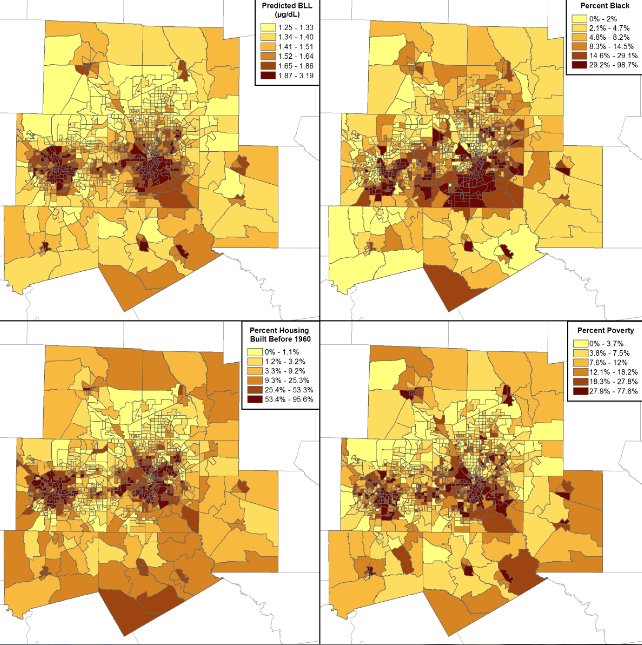Predicting Childhood Lead Exposure at the Census Tract Level
Connect with an expert opens in a new pageChallenge
The Solution
To help identify demographic predictors, we reviewed the literature to identify modeling results which relate childhood lead exposure, as measured by BLL, to predictive factors available at different spatial scales. The demographic predictor data was obtained from the U.S. Census Bureau based on information collected in the American Community Survey. For modeling purposes, we obtained surveillance data from the State of Michigan, Commonwealth of Massachusetts and State of Texas, collected as part of their public health programs. We merged the blood-lead data by census tract with the demographic predictor data. In addition to the predictors available at the census tract level, we also included the season of the blood-lead sampling, whether a capillary or venous blood sample was drawn, the age of the child and the year of the sample to account for long-term trends.

The Outcome
Case Studies
Technology Commercialization and Licensing
With over 90 years of research and development experience, Battelle supports all areas of industry with intellectual property licensing focused on bringing our cross-disciplinary expertise to meet our clients' most difficult challenges.
